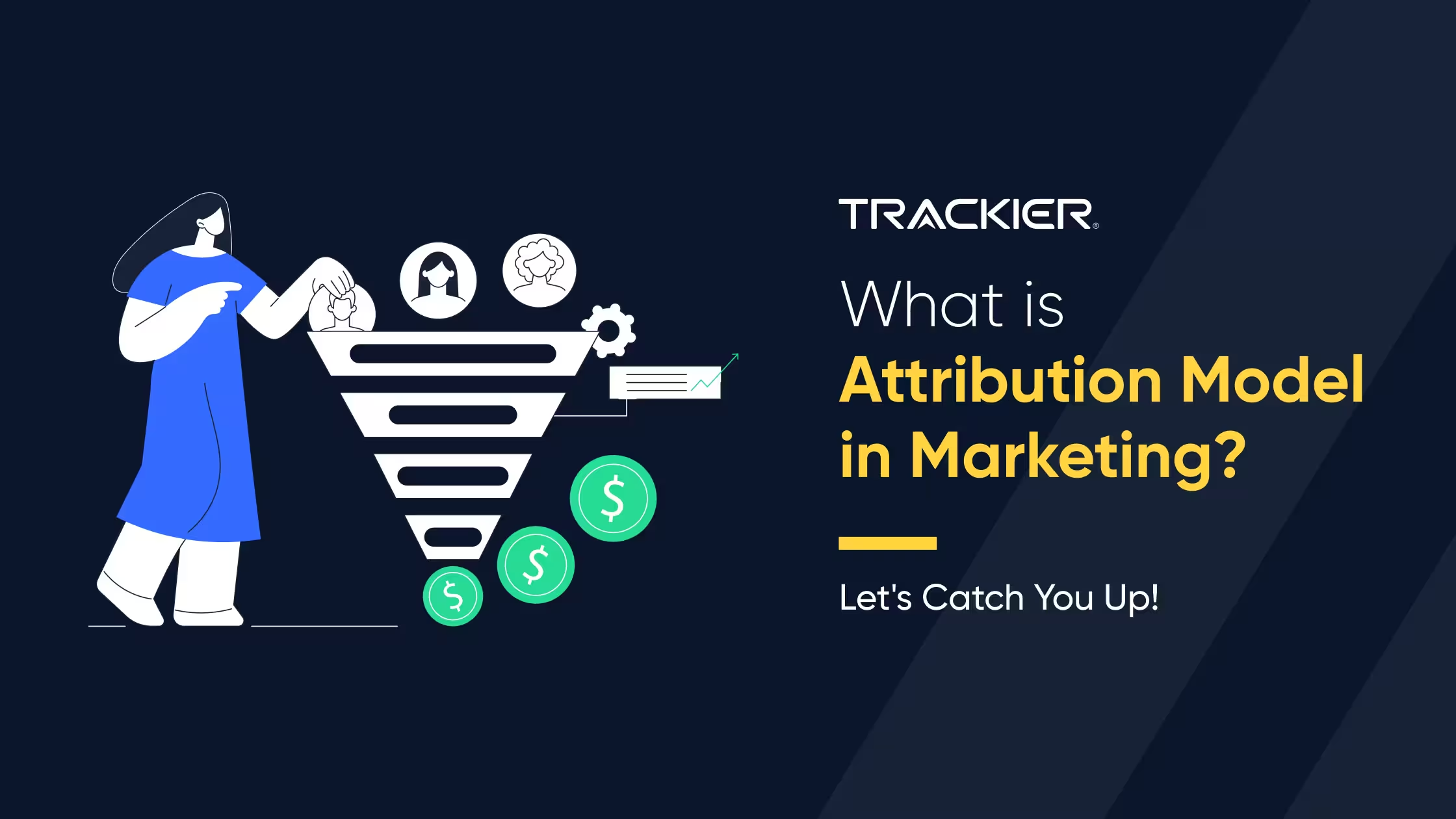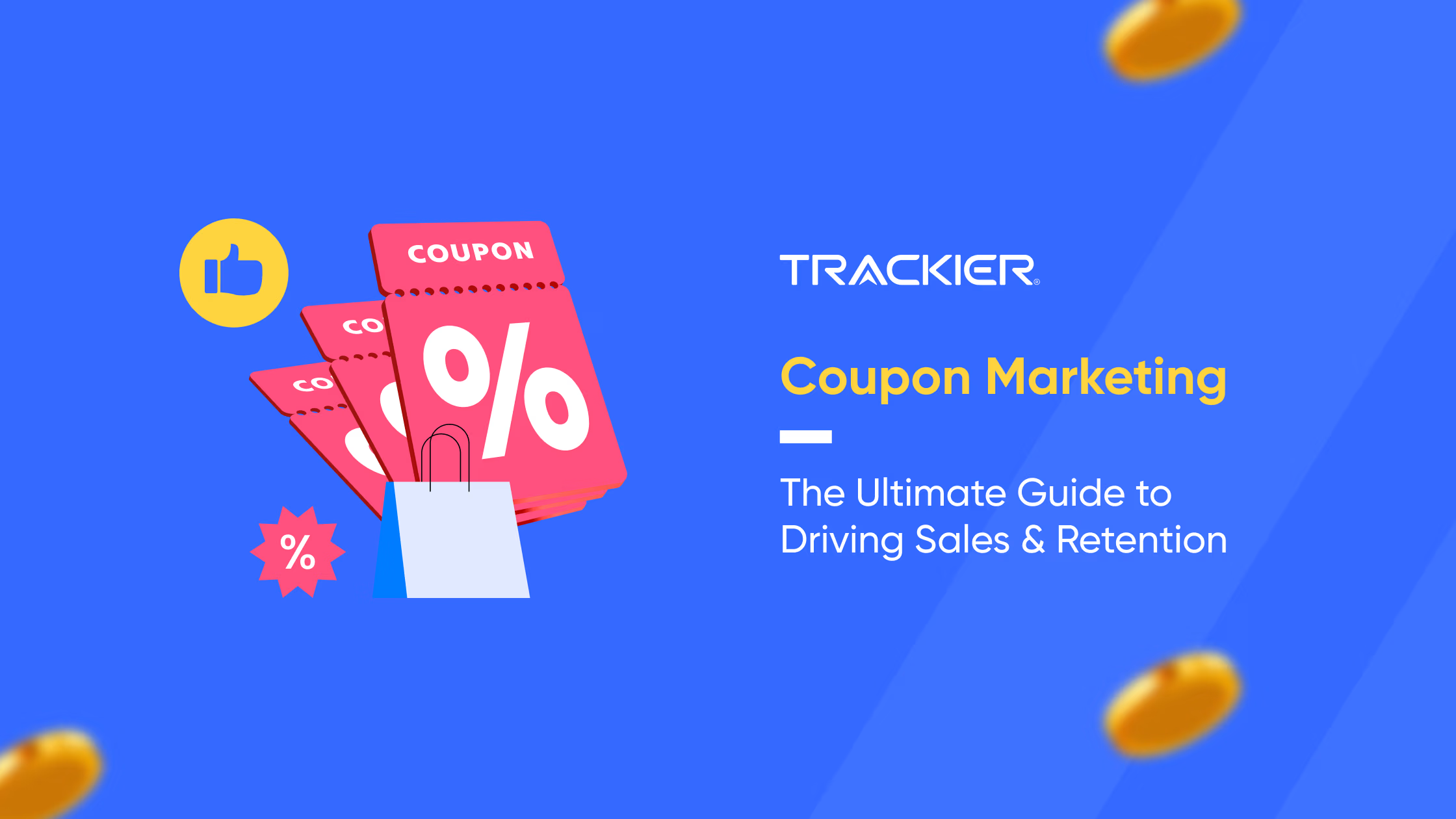If you’re a marketer, you’ve probably asked, “Which marketing touchpoint really made the sale?”
That’s exactly the question an attribution model answers, and getting it right changes everything.
In this article, you’ll get a practical guide to what attribution does, how to pick the version that fits your sales cycle, and why marketing attribution paired with solid software is the single best way to start proving impact.
Why should you care, right now?
Because budgets are tight and expectations are high. When you can show which channels and partners actually make a difference, you can shift spend right towards the tactics that grow revenue.
You’ll also stop overpaying partners who only appear at the last click, and start rewarding those who nurture customers earlier in the journey.
This article is built to be useful on and from day one. Read on and you’ll walk away with a clear strategy to tighter measurement, lower CAC, and smarter partner economics.
What is an attribution model in marketing, and why should you care?
In plain terms, a marketing attribution model is the set of rules that help you allocate credit to the different touches a user had before converting.
You care because marketing is no longer siloed, meaning your buyer might click a search ad, scroll a social feed, read a blog, see a remarketing ad, and finally convert. Without a well-chosen attribution model, you’ll misallocate budget and waste resources.
For example, brands using more advanced models report significantly lower customer acquisition costs (CAC) and higher ROI.
In short, if tracking “which channel drove the sale” is important to you (and let’s be honest, it is), then mastering your attribution model is non-negotiable.
What is an example of an attribution model?
There are many attribution model examples, and honestly, you’ll want to pick one based on your business and sales cycle. Here are some of the most used ones:
Single-touch models
- First-touch attribution: Everything is credited to the very first interaction.
- Last-touch attribution: 100% of credit goes to the touchpoint immediately before conversion.
These are simple to implement, but often misleading since they don’t show you the full journey.
Multi-touch models
- Linear attribution: Equally spreads credit across all touchpoints. › “Cool, fair,” right? But it flattens nuance.
- Time-decay attribution: Gives more credit to touches closer to conversion. Useful if you have a longer sales cycle.
- Position-based (U-shaped or W-shaped): For example, a U-shaped model might give 40% to first touch, 40% to last touch, and the remaining 20% split among mid-touches.
- Data-driven / algorithmic attribution: Uses statistical modelling (e.g., Markov-chains or Shapley values) to allocate credit optimally.
So yes, back to the question that started the whole conversation, “What is an example of an attribution model?” Well, pick the one that suits your needs best.
The key is matching the model to the business.
What is the “7 day attribution model”, and when might you use it?
“7 day attribution” refers to a window in which the conversion is attributed to a touchpoint that occurred within the last 7 days. It is a variant of last-touch or multi-touch, where the time horizon is 7 days.
You might use it if your conversion cycle is short, for example, e-commerce flash promotions or trial-to-purchase SaaS with rapid decision-making.
However, it is important to keep in mind that if your sales cycle is longer or the customer does multiple interactions across weeks (say, enterprise B2B), a 7-day window might undercount earlier influential touches.
In short, if you’ve got rapid conversions, the “7-day attribution model” can give near-real-time clarity. If your cycle is longer, broaden your window and consider multi-touch.
How do you choose the right attribution model for your organisation?
Choosing the right attribution model is both art and science.
Here’s how we at Trackier walk clients through it (feel free to replicate this):
1. Start with your business fundamentals
- What is your typical sales cycle length? (If it’s days, a simpler model may suffice. If weeks/months, you’ll need multi-touch.)
- What channels do you use? (Online only? Offline plus online?)
- What’s your key conversion event? (Lead, demo request, purchase?)
2. Audit your data + tracking setup
If your tracking is inconsistent, missing data or has multiple touch-points untracked, then even the best model will mislead. Many marketers struggle to gain actionable insights because their attribution data is weak.
Make sure you have unified user IDs, channel tagging, cross-device view, and first-party data aligned.
3. Pick a starting model; simpler is better
If you’re new to attribution, we suggest starting with a linear or time-decay model. This is because you’ll capture more of the journey without overwhelming complexity. Then you evolve. As research says, “Begin with simpler marketing attribution models and evolve as data quality improves.”
4. Validate and iterate
Run your chosen model, then test: does it align with what the business knows ‘feels right’? Does it correlate with margin, LTV, and churn? If not, tweak. For example, you might find early-touch channels (webinar, blog) had more influence than the last-touch ad.
Over time, you may move to algorithmic/data-driven attribution once you have enough data and integration.
5. Use the right marketing attribution software
You’ll need software that can handle cross-channel, multi-touch attribution and integrates with your tech stack. The marketing attribution software market is expanding rapidly, expected to grow from $2.9 billion USD in 2024 to 10.6 billion USD by 2032.
Investing in the right tool matters for scalability and trust in your insights.
What are the benefits of applying the best attribution model (and software) now?
Well, we have seen this happen numerous times: you switch from a simplistic model and your budget suddenly shifts, and you get better ROI.
Here are the key gains:
- Better budget allocation: You know which channels are truly driving conversions and which are distracting.
- Lower Customer Acquisition Cost (CAC): Studies show firms using sophisticated attribution models reduce CAC and improve ROI.
- Increased transparency for stakeholders: As marketing becomes more measurable, you build credibility with leadership.
- Improved partner and affiliate channel optimisation: In partner marketing, especially, attribution is critical to reward the right partner and prevent fraud/spam.
- Future-proofing your measurement: With privacy rules, device fragmentation and new channels (CTV, DOOH) growth, your attribution model will have to evolve.
What marketing attribution software features should you look for?
If you’re evaluating software to support your attribution-model work, here are the features you should prioritise, and why they matter:
1. Cross-channel integration
Your buyer journeys don’t live in one channel. They may begin with content marketing, continue through a partner-affiliate link, then go to paid search, and then a sales call. Software must pull data from paid search, social, organic, affiliate/partner, and offline touches (sales, events).
Benefit: You get a unified view of the journey instead of siloed channel views. Without this integration, you’ll keep misattributing value.
2. Flexible attribution model support
You want software that lets you switch between first-touch, last-touch, linear, time-decay, position-based, data-driven/custom models and compare results.
Because your business may start simpler (linear/time-decay) and evolve to algorithmic/data-driven as your data quality improves. The software must support this evolution.
Benefit: You avoid being locked into a rigid model that may mislead you as your business grows or your sales cycle length changes.
3. Customisation & algorithmic modelling
Advanced businesses are moving to data-driven attribution (using machine learning, Markov chains, Shapley values) to get more accurate credit allocation. For example, research shows algorithmic attribution boosts precision in complex journeys.
Benefit: You gain deeper insights, discover hidden influencer touches (e.g., a partner blog download that triggered later conversion) and optimise more intelligently rather than relying on blunt rules.
4. Data-driven insights (CAC, LTV, ROI dashboards)
You and your stakeholders (CFO, RevOps, partner leads) care about metrics like CAC, LTV (lifetime value), ROI per channel or partner cohort. The software should have dashboards showing those metrics.
Benefit: Makes your marketing measurement speak the language of finance, supports budget decisions and partner incentives. It helps you demonstrate value.
5. Partner & affiliate module support
In partner/affiliate marketing, your needs are slightly different: deep link tracking, partner ID attribution, partner cohorts, partner commission logic, and partner-influenced conversions.
Benefit: You can properly attribute partner performance, reward the right behaviour, improve partner satisfaction and retention, and avoid over-paying for trivial touches.
6. Privacy-compliant & first-party data support
With third-party cookies fading, devices fragmenting, privacy regulation tightening, your attribution tool must rely on first-party data, server-side tracking, consent-based measurement, de-duplication, and be future-ready for CTV, voice assistants, etc.
Benefit: You’re future-proofing your measurement stack. You’re not at the mercy of missing data or tracking gaps. Your insights remain reliable.

What’s your next move?
Now that you understand what an attribution model is, and why your business needs one (and the right software), here’s what I suggest you do next:
- Audit your current tracking and data quality.
- Document your typical sales cycle and channel mix.
- Pick a starting attribution model (linear/time-decay) and apply it to your last quarter’s data.
- Choose attribution software that supports flexible models and partner/affiliate tracking.
- Monitor results, iterate, and gradually move to more advanced (data-driven) models.
Hungry for more? Download our free case studies that cover real stories.
Or sign up for the Trackier’s newsletter to get weekly best practices on referral programs and partner marketing.
FAQs
Q: What is an attribution model in marketing?
An attribution model in marketing is a framework that assigns credit for a conversion to one or more touchpoints in the customer journey. In practice, it answers the question “Which interactions helped drive this outcome?”
Rather than saying only “last click wins”, a good attribution model recognises that a buyer might interact with ads, content, email, social, and referral before converting. Using the right model helps align spend with what actually drives conversions across your channels.
Q: What is an example of attribution model?
One common example: a time-decay attribution model. Say a buyer viewed an ad, then two days later watched a webinar, five days later clicked a paid search ad and converted. Time decay might give more credit to the paid search and webinar since they are closer to conversion, and less to the first ad.
Another example: a position-based (U-shaped) model might give 40 % credit to first touch, 40 % to last touch, and split the remaining among middle touches. By contrast, first-touch or last-touch models are simpler but often less accurate.
Q: What is the 7 day attribution model?
The “7 day attribution model” generally refers to using a 7-day window between the touchpoint and conversion for crediting. For example, if a user clicks an ad and converts within 7 days, that ad gets the credit under the model. It might be used in short-cycle e-commerce or app-install campaigns.
The risk: any touch earlier than 7 days might not be credited, so you may miss the full journey in longer-cycle businesses. If your sales cycle is longer or touches happen across weeks, you’ll want a broader window and likely a multi-touch attribution model instead.



